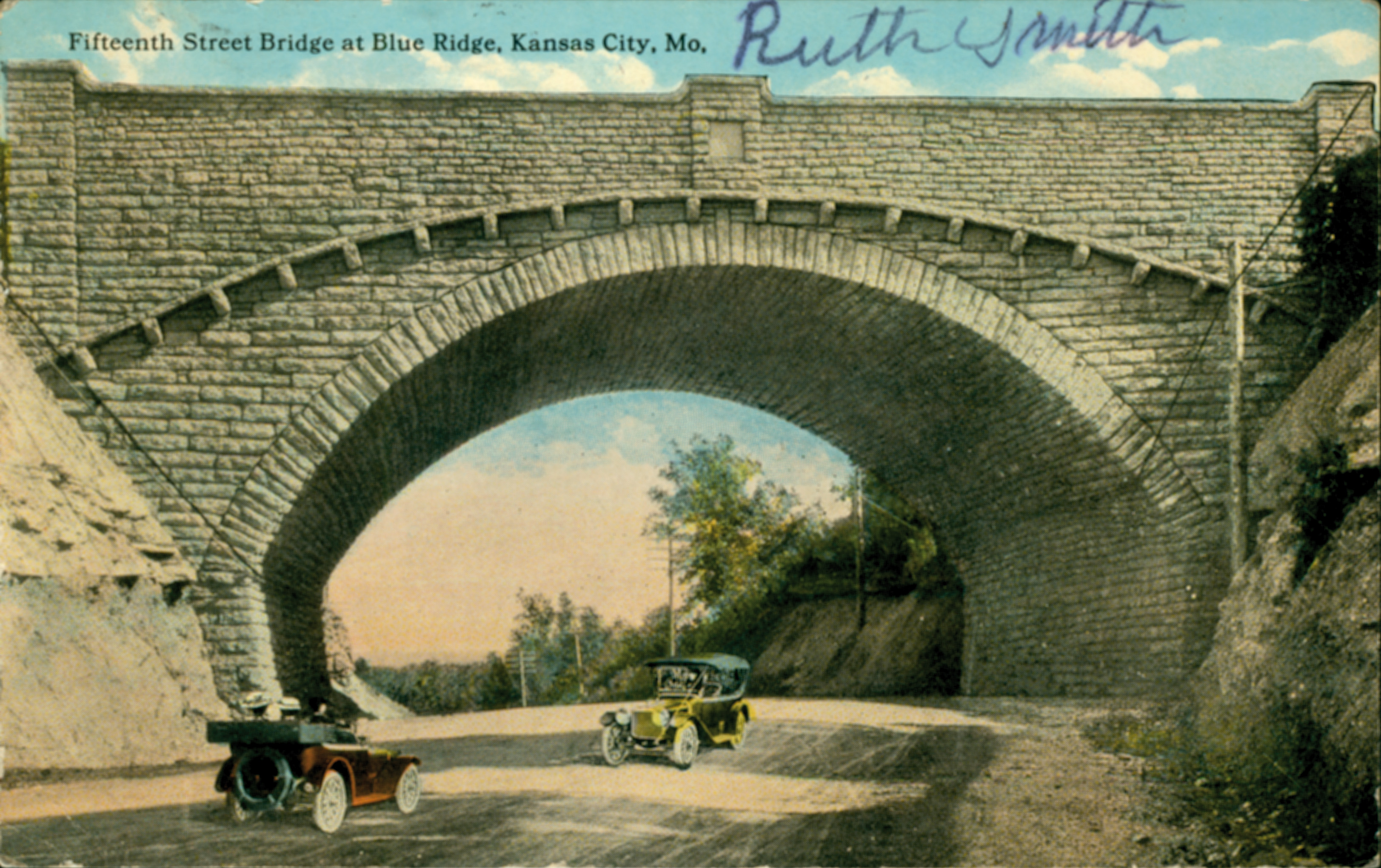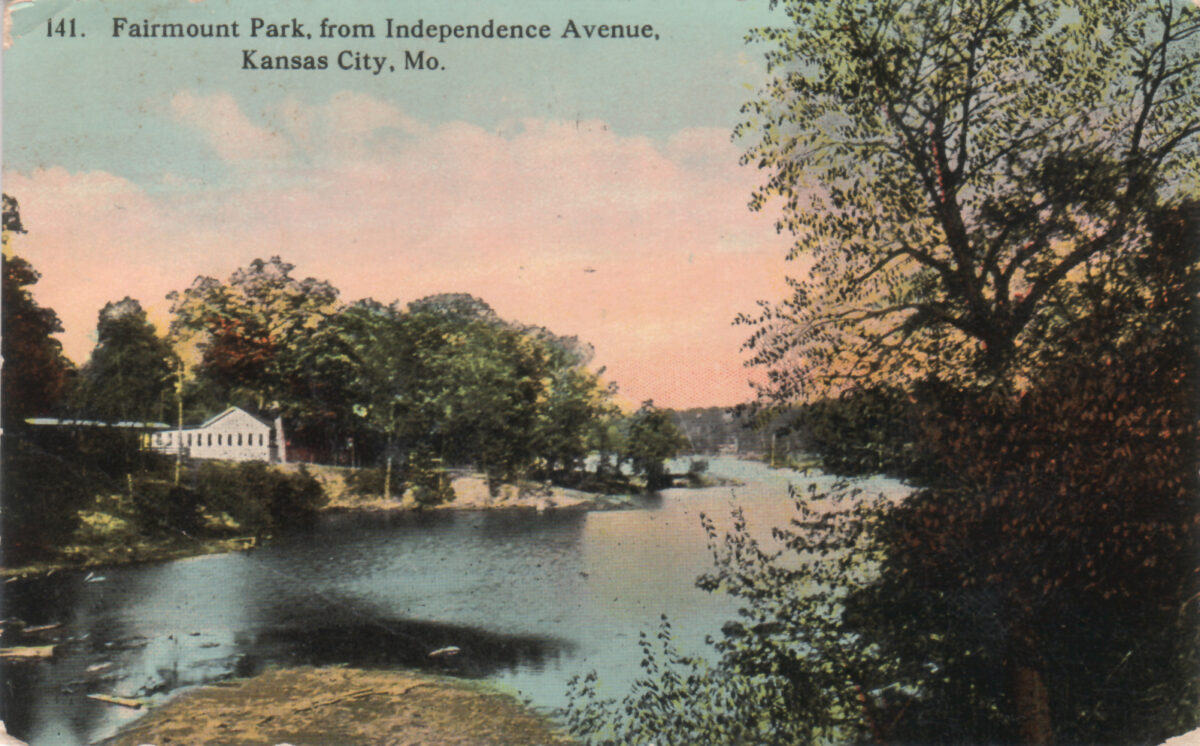By MICHAEL BUSHNELL
Northeast News
January 18, 2017
Built in 1906-07 by the Swenson Construction Company at a cost of $15,000, the stone arched 15th Street bridge spans what was then R.T. Van Horn Road by the new Blue Ridge Boulevard. At its highest point, the bridge is 80 feet above the road and is noted as one of the highest elevations in the city at close to 950 feet above sea level.
The view offers sweeping vistas of downtown Kansas City and Independence, as well as points south and west. During July 1910, a group of parks officials from Jersey City, NJ, visited Kansas City to see the progress landscape architect George Kessler had made developing the city’s parks and boulevard system. Standing near the center of the new span looking west across the Blue River, one of the officials said that upon completion of Blue Ridge Boulevard, there wouldn’t be a better view west of the Hudson River.
The span is some 80 feet in breadth and a little over 150 feet in length. Built entirely of native limestone quarried locally, the bridge is a keystone arch style bridge, referring to its large keystone in the center top of the arch on each side.
R.T. Van Horn, also known as 15th Street, begins in downtown Kansas City and is one of the city’s busiest east-west thoroughfares. In February 1946, the Kansas City Council undertook a discussion to rename Van Horn Road and 15th Street Truman Road, in honor of then President Harry S. Truman. After almost two years of vigorous debate, Van Horn Road was officially dubbed Truman Road — some say to the dismay of President Truman and others who believed that no honors such as this should be bestowed on a person still taking up space above ground.
The Hall Bros. postcard was sent to Mr. William Keller, of Markle, in Huntington County, Ind., on July 20, 1918. The message on the back reads: “We are at Uncle Jakes now. We will come to Markle Sat pm, Aunt Lide is coming with us. Uncle Dora talks of coming too. Ruth Smith.”


















